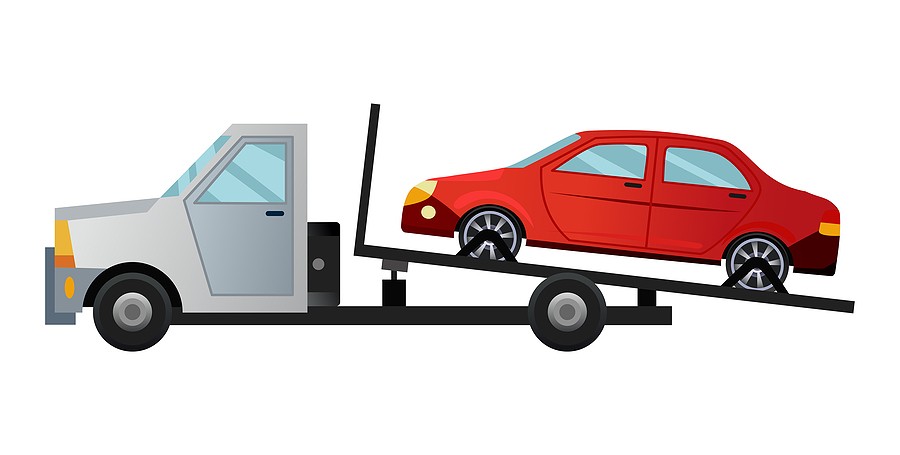What is payload when it comes to vehicles? Simply put, payload capacity is the maximum amount of weight it can carry without sacrificing safety. That includes all of the weight in the cabin and trunk when you are talking about a car or SUV’s payload. When calculating the payload of a truck, you must include all of the weight in the cabin and bed. If you are towing a trailer, you must calculate the weight of the trailer pushing down on the trailer hitch, which is known as tongue weight, and include it in your total payload.
Payload varies by model within a vehicle line depending on how each model is outfitted. Anything that increases the curb weight of a vehicle (the weight of the vehicle plus its vital fluids), such as a moonroof, or a third row of seats, all-wheel or four-wheel drive, can decrease the payload.
What does payload mean for towing?
If you believe that payload and towing capacity are synonymous, you should correct yourself. One is actually all about carrying, while the other is all about pulling. Learn the key distinctions between these frequently misunderstood truck terms so you don't endanger your truck or cargo. It's time to talk about trucks.
The main distinction between payload and towing capacity is straightforward. So what is payload? Payload refers to the amount of cargo a pickup truck can carry, while towing refers to the amount of weight a pickup truck or car can pull.
The payload capacity of your truck refers to all the cargo weight that you can safely add on top of the empty weight of your truck (also known as curb weight). A “payload” can range from a truck bed full of gravel. to a week's worth of luggage or even the number of passengers it can carry.
Your vehicle's payload capacity is calculated by the manufacturer and listed in the owner's manual. However, you can calculate your truck's payload capacity on your own using the following formula. What is payload? That of your own vehicle? Find out by determining your Gross Vehicle Weight Rating (GVWR) and the curb weight.
The GVWR is the maximum allowable weight of an entire vehicle when packed and ready to go or is simply the weight of the vehicle itself, all of the necessary fluids for operation (diesel, gasoline, oil, etc), and any tools, cargo, including the passengers. The manufacturer calculates the GVWR of a vehicle, which can usually be found in the owner's manual or on the vehicle's doorframe, near the door latch. You may also be able to find the GVWR of your vehicle on websites that list these figures.
Curb weight is simply the weight of the vehicle without any cargo or passengers. This measurement takes into account a full tank of gas as well as any other fluids that keep a car running.
Subtract the curb weight of your truck from its GVWR to determine its payload capacity! Another question people frequently ask, what is payload? Does it include fuel? This measurement takes into account a full tank of gas as well as any other fluids that keep a car running. So calculating a vehicle's payload capacity (the amount of stuff it can safely carry after you've filled up the tank with gas and topped off all of the fluids) is as simple as subtracting.
However, keep in mind that what you consider payload for a truck will be very different from what you carry in a car or SUV. Long wooden boards for your house's reconstruction are unlikely to be transported in a small station wagon. At the same time, you probably don't need a large, heavy-duty truck to transport a few bags of groceries.
The majority of the time, a truck's payload will consist of heavier cargo. It is important to note that in the United States, trucks are classified based on their maximum gross vehicle weight rating.
Does vehicle payload include driver?
What is payload capacity? Does it include the driver of the vehicle? The payload can be found on the sticker found on the door and the payload capacity includes everything your vehicle left the factory with, and as stated above — plus a full tank of fuel. Anything beyond that, like additional accessories you have placed and the driver must be deducted from payload.
What does payload sticker include?
The GVWR minus the payload number on the sticker equals the truck's curb weight as it left the factory. That 1,404LB figure represents your truck's payload capacity as specified by the manufacturer. Before reaching the GVWR, it can carry that much weight in people, gear, and hitch weight.
Pickup trucks are classified as half-ton, three-quarter-ton, or one-ton. These names indicate how much cargo the truck's bed can hold. Light duty pickup trucks are roughly equivalent to half-ton models, while heavy duty trucks are roughly equivalent to one-ton trucks.
Weight restrictions are particularly important in SUVs. Although these vehicles have safety features such as electronic stability control, which reduces the risk of a rollover, their higher weight and center of gravity make them more prone to tilting if you try to carry too much weight.
What happens if you go over payload capacity?
Pickup trucks are designed for hauling and towing, but they have a carrying capacity. If you exceed these, you may discover that your vehicle’s steering, handling, and braking are now compromised. You also increase your chances of breaking down and even rolling over.
Understanding how much payload your vehicle can handle is critical for safety. So work crews aren't the only ones who should be concerned about payload capacity. Payload limits should be taken seriously by families, outdoor enthusiasts, and any driver who likes to transport multiple people or goods.
Take note that one of the simplest ways to damage your truck's frame, engine, transmission, and tires is to ignore its towing and payload capacity. Before pushing, pulling, or hauling any load, consult your owner's manual. Proper hauling, which is based in part on the stability of your cargo, can also help to avoid accidents.
You'll notice obvious signs that you're carrying too much payload as you drive down the road. The steering will feel heavier as you try to maintain control. The increased pressure on the shocks, suspension system, and wheels will make it more difficult to control the truck.
Furthermore, exceeding payload capacity increases the likelihood of a tire blowout. Tires have weight limits printed on the sidewalls, and going over them is never a good idea. When a tire fails catastrophically, you should be able to keep control of your truck under normal circumstances, but the excess payload may make it impossible to safely move off the road.
Furthermore, any sudden movement of people or cargo could shift weight to one side of the vehicle, causing it to roll over and kill everyone on board. According to the NHTSA, rollovers account for roughly one-third of all vehicle fatalities. Transmission failure, especially as an overloaded truck climbs a steep hill, is another potential threat when payload limits are exceeded.
Furthermore, any bump, pothole, or other road abrasion will be magnified. The truck's undercarriage may scrape the pavement, causing structural damage to the entire vehicle. In short, science and safety are working against the driver who exceeds the truck's payload capacity.
Even when operating a pickup truck within payload tolerances, drivers can lose control if the weight is not evenly distributed. When there is too much weight on the rear axle, the front axle may not be able to make secure contact with the pavement. Avoid this and other similar issues by being mindful of what and how much weight is strapped to your truck.
How can I increase the payload of my car?
You may ask what is payload capacity — can it be increased? Yes, you can do something about it. However, the only way to increase payload rating is to remove weight from the truck, which can be accomplished by removing the rear seat or bumper, using lighter wheels and/or tires that meet gross axle weight rating requirements, and so on.
Be informed that the payload figures found on manufacturer websites and brochures put emphasis on “best-case” scenarios. The truck in question will be outfitted with the bare minimum of equipment required to achieve the specified rating. Optional parts usually add weight, but there are some exceptions, such as switching from steel to alloy wheels, using an aluminum-block engine instead of iron, using smaller mirrors, or removing the bumper or spare tire. Anything else you add, such as a hitch, winch, or megawatt stereo, will reduce your payload rating.
Although payload calculations differ from manufacturer to manufacturer, the GVWR and GAWR (gross axle weight rating) on the certification label are standardized and absolute. The GVWR can only be set by the manufacturer or an upfitter who started with an incomplete vehicle. There is no leeway in this rating. It exists because things can and will break above it. And if you overload the vehicle, a break may break your wallet as well, because the warranty will not cover it. Finally, keep in mind that regulations frequently differentiate between recreational and commercial use.
Validation of the gross combined weight rating (GCWR) covers things like driveline durability and cooling, whereas validation of the GVWR and GAWR covers brakes, frame, wheel bearings, springs, suspension arms/bushings, steering pumps and gear, tires, and box integrity. When you look at the rear axle GAWR on many single-rear-wheel pickups, you'll notice that it's an odd number that's exactly twice the maximum load rating for the tires on it.
While it may be true that you won't be able to increase your payload capacity, you can increase the comfort of a truck that is operating at or near GVWR. You can place auxiliary airbags or perform a complete air suspension swap. You may also have thicker anti-roll bars that can all help with weight. But things must be done cautiously. Increasing the diameter of one anti-roll bar without addressing the other end will affect balance and handling, and increasing the spring rate necessitates matching the shocks. Coil-over and air shocks are undesirable because they transfer weight to shock mounts that are not designed for them.
Truck manufacturers almost always offer towing packages as an option for their vehicles. What is included in these packages varies by company, but they typically improve the performance of the tow vehicle and include additional tools for better towing. A truck with a towing package, for example, might include a trailer wiring harness, a heavy-duty hitch, and safety chains. In order to improve overall performance, the manufacturer may also install a larger engine, stronger brakes, and a better cooling system.
Remember that overloading a vehicle with an excessive payload is a risky situation that can endanger you, your passengers, and other drivers. If a police officer pulls you over and determines that your vehicle is overloaded, you may receive a ticket for unsafely loading a vehicle, which no one wants.
Your payload capacity may be less than you think. Some small sports cars have a towing capacity of less than 450 pounds. If all seats are filled with occupants weighing 165 to 170 pounds, some vehicles with a higher seating capacity will reach their weight limit.
Because your carrying capacity will be reduced if your tires are underinflated, the weight limit is frequently included alongside the recommended tire pressure. Carrying too much cargo on tires that are not inflated to the recommended pressure causes the air inside the tires to heat up faster, increasing the likelihood of tire failure.
Remember that any weight reduction will help improve your fuel economy. A cargo box or other large container on your roof can cut your mileage by up to a quarter. Every 100 pounds added to a vehicle's weight reduces its fuel economy by 1%, with the effect being more evident when you have a smaller vehicle.



